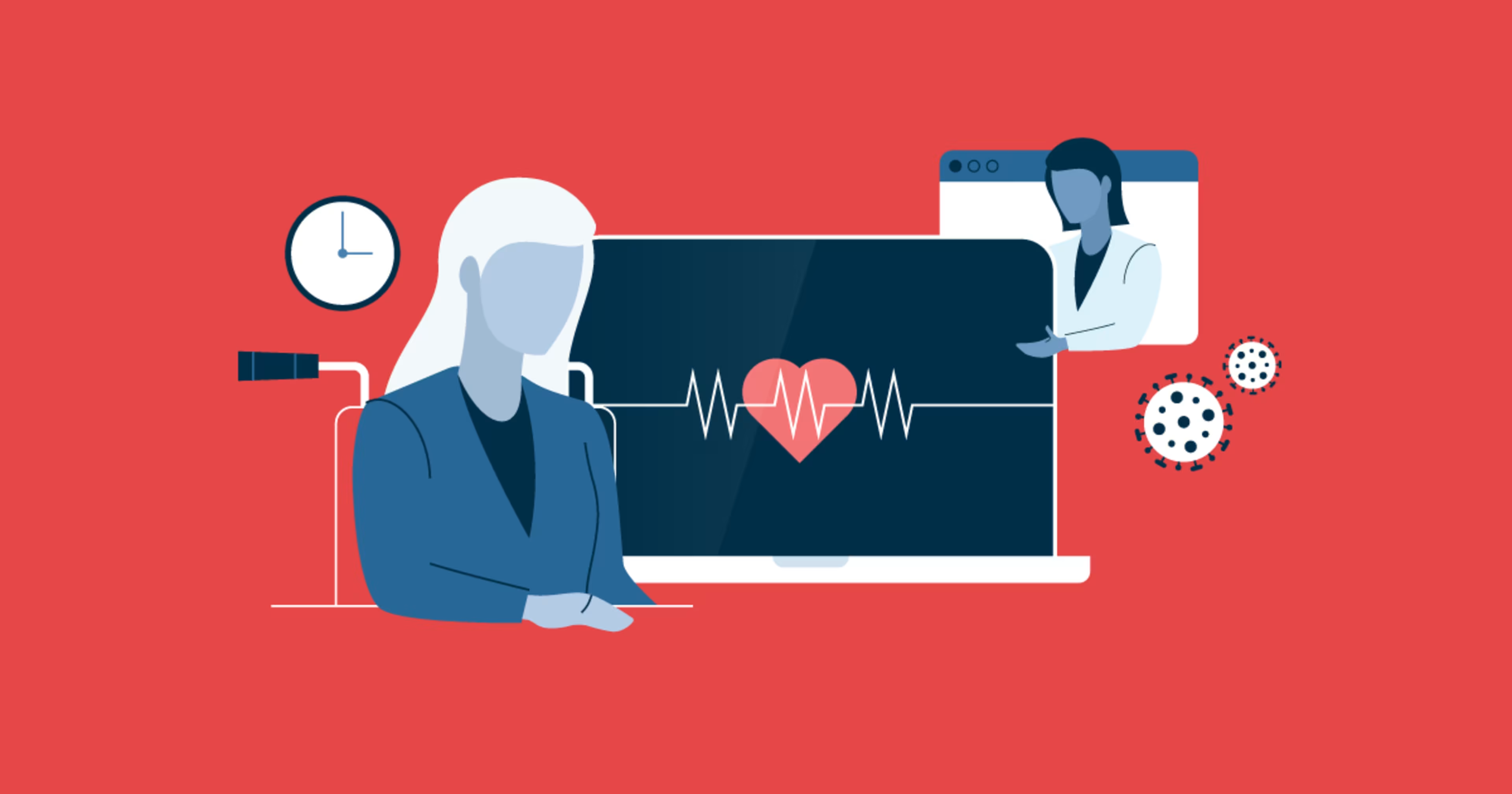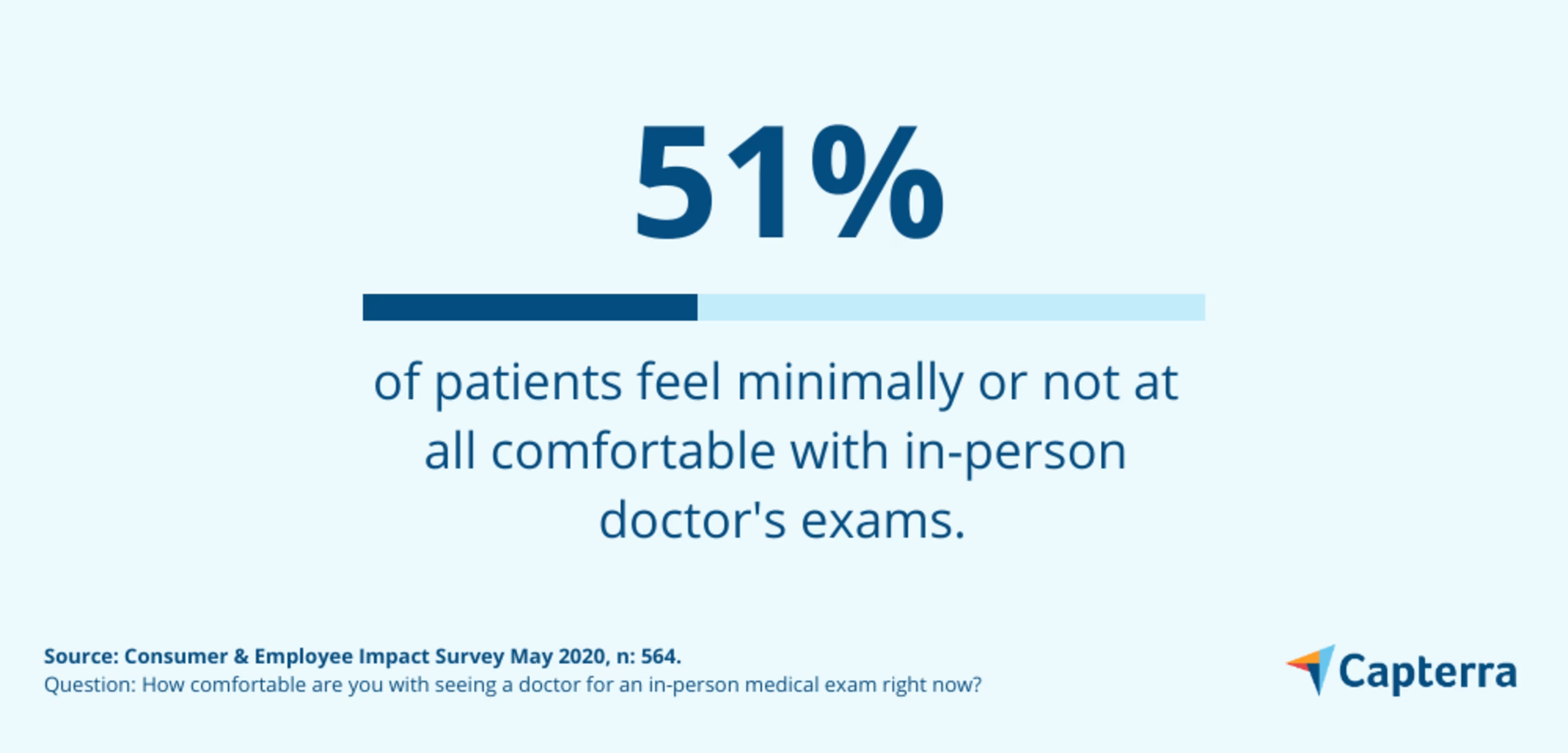Learn how remote patient monitoring can help you grow your business while keeping patients safe.

As we settle into the “new normal” of COVID-19, what were once routine activities now cause us to second-guess ourselves. According to a May 2020 Capterra survey, 51% of patients are not comfortable or only minimally comfortable with resuming in-person exams during the pandemic.

For those who suffer from a chronic disease, high blood pressure, or have recovered from a severe illness, these concerns are magnified. These patients are considered high risk for COVID-19 and it's especially important for them to maintain routine health and wellness checkups.
That's where telehealth, including remote patient monitoring (RPM), comes in. RPM allows physicians to monitor patients' health without patients needing to physically go to a healthcare facility. This can make life easier for both you and your patients. As RPM becomes more mainstream, it may become table stakes for your practice.
In this article, we’ll discuss the benefits of remote patient monitoring and more about this growing technology.
What is remote patient monitoring?
Remote patient monitoring (RPM) is the use of mobile devices, information tech, and communications technologies by healthcare professionals to monitor patients' conditions. Patients use wearable sensors and monitoring devices that capture data such as vital signs, blood glucose levels, blood pressure, and weight. The medical device transmits the data to healthcare professionals.
From there, doctors and medical professionals analyze the data and follow up with appropriate care, either virtually or in person. Typically, medical professionals will use remote patient monitoring software to help streamline and manage this process.
Advances in cellular networks, cloud computing, wearable devices, remote patient monitoring technology, data storage, and telehealth have all contributed to the rise in remote patient monitoring. For all these reasons, RPM use is expected to continue to grow over the next 12 months.
Benefits of remote patient monitoring
Even before the COVID-19 pandemic, remote monitoring was gathering steam as a way to emphasize value-based care. Since RPM helps catch symptoms early, it contributes to improved patient outcomes. Add to that the fact that many patients want to minimize doctor and hospital visits as much as possible, and it’s easy to see why the adoption of remote patient monitoring has surged over the past six months.
Let’s discuss some benefits of remote patient monitoring in more detail.
1. Reduce the risk of infection at your office
Remote patient monitoring has been especially helpful for keeping track of patients who test positive for COVID-19. With RPM, you can carefully monitor your patients for respiratory distress or other changes in their condition using connected devices such as sensors, thermometers, or blood pressure devices. Plus, these patients can stay at home and prevent others from being infected.
On the flip side of keeping sick people away from the doctor’s office, remote patient monitoring also keeps healthy people out of harm’s way, especially during a global health crisis.
Those who have acute or chronic conditions unrelated to COVID-19 that can be managed safely from home, such as cardiovascular disease or even preterm birth, can use RPM. That way, they don’t need to make unnecessary trips to the doctor’s office and increase their risk of contact with sick patients.
Under Medicare, regulations used to limit remote patient monitoring to patients with chronic conditions, but recent changes related to the pandemic now allow RPM for both chronic patients as well as for new patients or acute issues. Some of these changes will also be permanent even after the current crisis. Now that the regulations have grown more lenient, it’s possible for practices like yours to expand the use of remote patient monitoring.
2. Attract new patients from remote or recovering areas
Even when the global health crisis is over, RPM will be especially helpful for patients who live in remote areas without easy access to the doctor for frequent checkups.
For instance, someone who has a heart condition or diabetes can manage their condition mostly at home while a doctor monitors them using sensors, coupled with virtual sessions with their care provider when needed.
RPM can also be beneficial in the aftermath of a natural disaster or crisis situation when a patient may have a difficult time physically getting in to see the doctor but still needs help managing a chronic condition.
3. Provide better quality of care
Pandemic aside, RPM can result in better quality of care because it allows for more constant monitoring of biometric data, whereas more traditional checkups rely on the patient themselves to track and monitor their own data. Through RPM, you can spot and address issues more quickly, which can result in a much better outcome for the patient.
Also, let’s face it, no one really enjoys going to the doctor, so RPM can result in a better patient experience for those managing chronic conditions from the comfort of their own homes.
4. Grow your practice in the long run
While it can be a big investment upfront in both medical equipment and software, remote patient monitoring can really pay off over time, both in terms of growing your practice, as well as better outcomes for patients.
If you can reduce congestion in your waiting room and spend more time on patients who need your immediate attention, you can increase your productivity by seeing more patients, which can result in higher revenue for your practice.
Especially now that so many restrictions are lifted and RPM has been opened up to a wider group of Medicare patients, it’s important to invest in this opportunity for the long run. Experts predict this could become the new status quo and patients may begin to expect their care provider to support this level of care (full content available for Gartner clients).
Practices that don’t adopt RPM could risk losing patients
As RPM usage will continue to increase in the wake of COVID-19 and especially over the next 12 months (full content available for Gartner clients), it’s important for your practice to understand the benefits of remote patient monitoring software.
It’s worth considering as an investment. As we’ve seen happen with the pandemic, patients have grown more comfortable with tech in everything from e-learning to using their camera in Zoom meetings, to more telehealth appointments.
RPM will continue to become more mainstream, so it’s important to budget for a remote patient monitoring platform and the related infrastructure ahead of time, as it’s likely patients will begin to demand it.